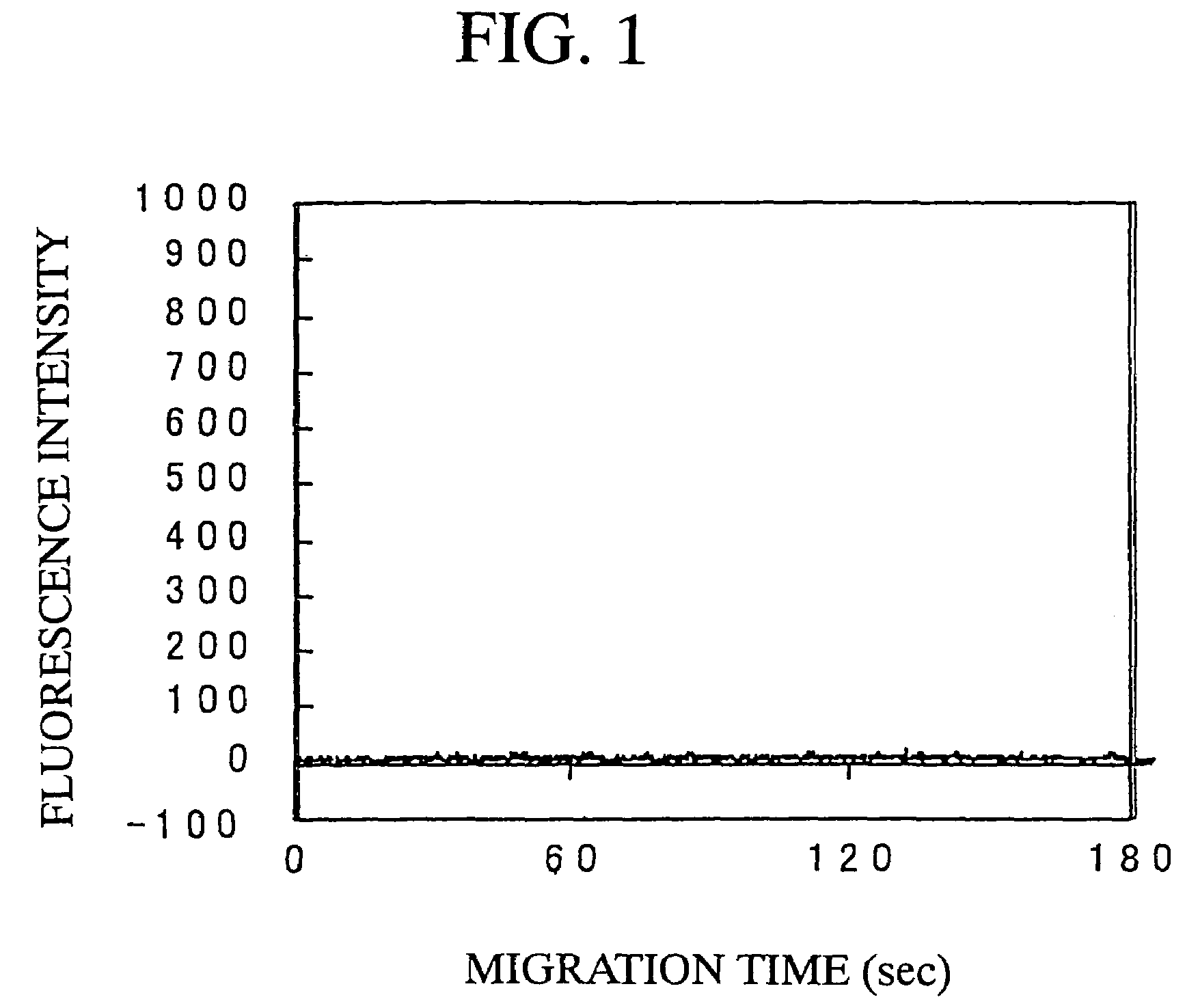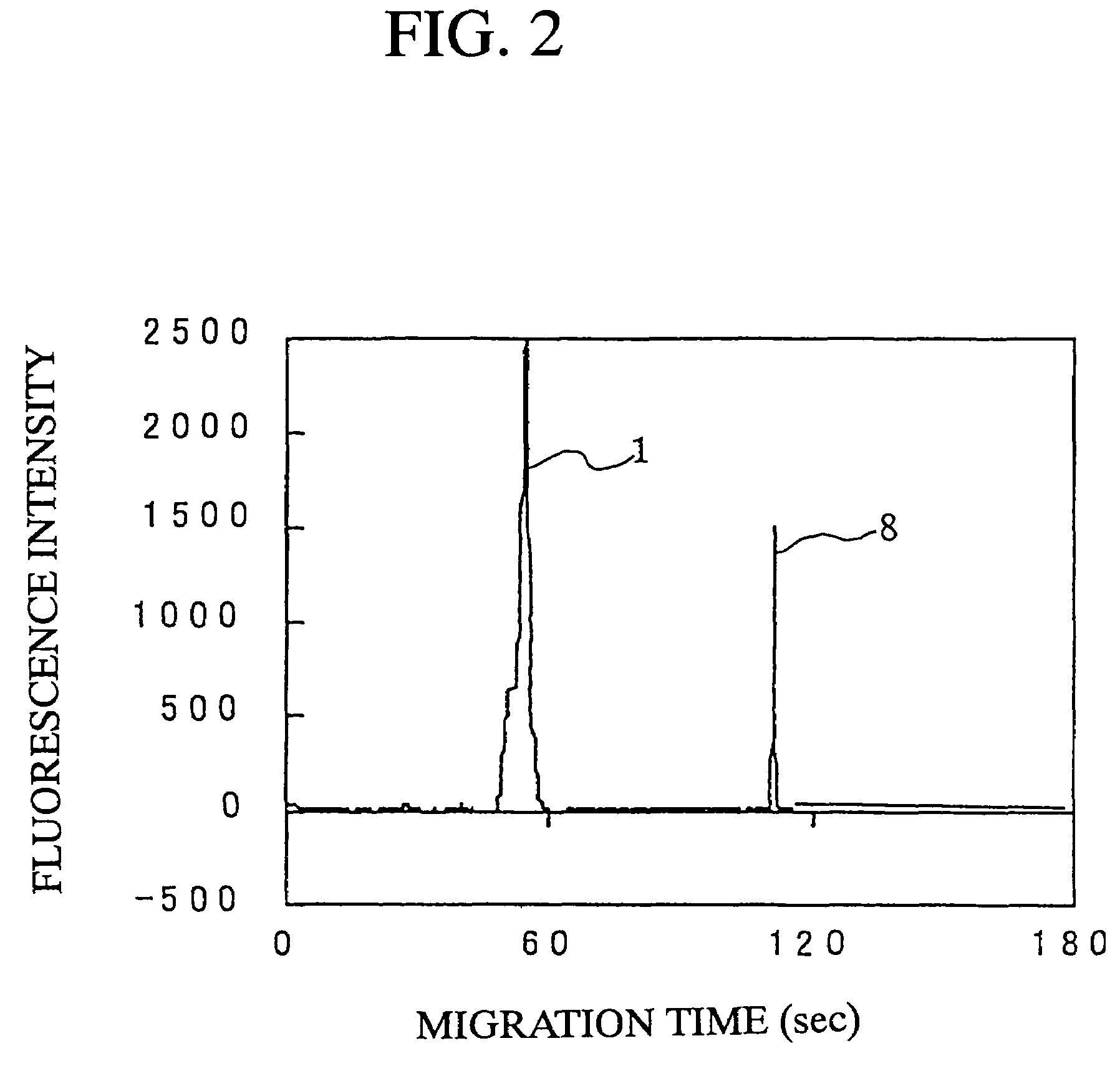Electrophoretic buffer
a technology of electrophoresis and electrophoresis method, applied in the direction of fluid pressure measurement, liquid/fluent solid measurement, peptide measurement, etc., can solve the problems of difficult injection, and high temperature sensitive viscosity of the buffer, so as to achieve rapid separation of polymer compound and high separation ability
- Summary
- Abstract
- Description
- Claims
- Application Information
AI Technical Summary
Benefits of technology
Problems solved by technology
Method used
Image
Examples
example 1
[0149]Using the polymer micelle as an electrophoretic buffer, separation of two DNA markers (100 bp and 800 bp) was carried out by electrophoresis in accordance with the usual method. As a result, a peak did not appear within the migration time of 180 seconds (FIG. 1).
example 2
[0150]Example 1 was carried out in accordance with the PP method. An intensity of the former P was M, and an intensity of the latter P was L. As a result, two peaks were found within the migration time of 180 seconds (FIG. 2).
example 3
[0151]An intensity of the former P of Example 2 was M, and an intensity of the latter P was M. As a result, the migration time of 100 bp was accelerated (FIG. 3).
PUM
| Property | Measurement | Unit |
|---|---|---|
| Time | aaaaa | aaaaa |
| Time | aaaaa | aaaaa |
| Time | aaaaa | aaaaa |
Abstract
Description
Claims
Application Information
 Login to View More
Login to View More - R&D
- Intellectual Property
- Life Sciences
- Materials
- Tech Scout
- Unparalleled Data Quality
- Higher Quality Content
- 60% Fewer Hallucinations
Browse by: Latest US Patents, China's latest patents, Technical Efficacy Thesaurus, Application Domain, Technology Topic, Popular Technical Reports.
© 2025 PatSnap. All rights reserved.Legal|Privacy policy|Modern Slavery Act Transparency Statement|Sitemap|About US| Contact US: help@patsnap.com



